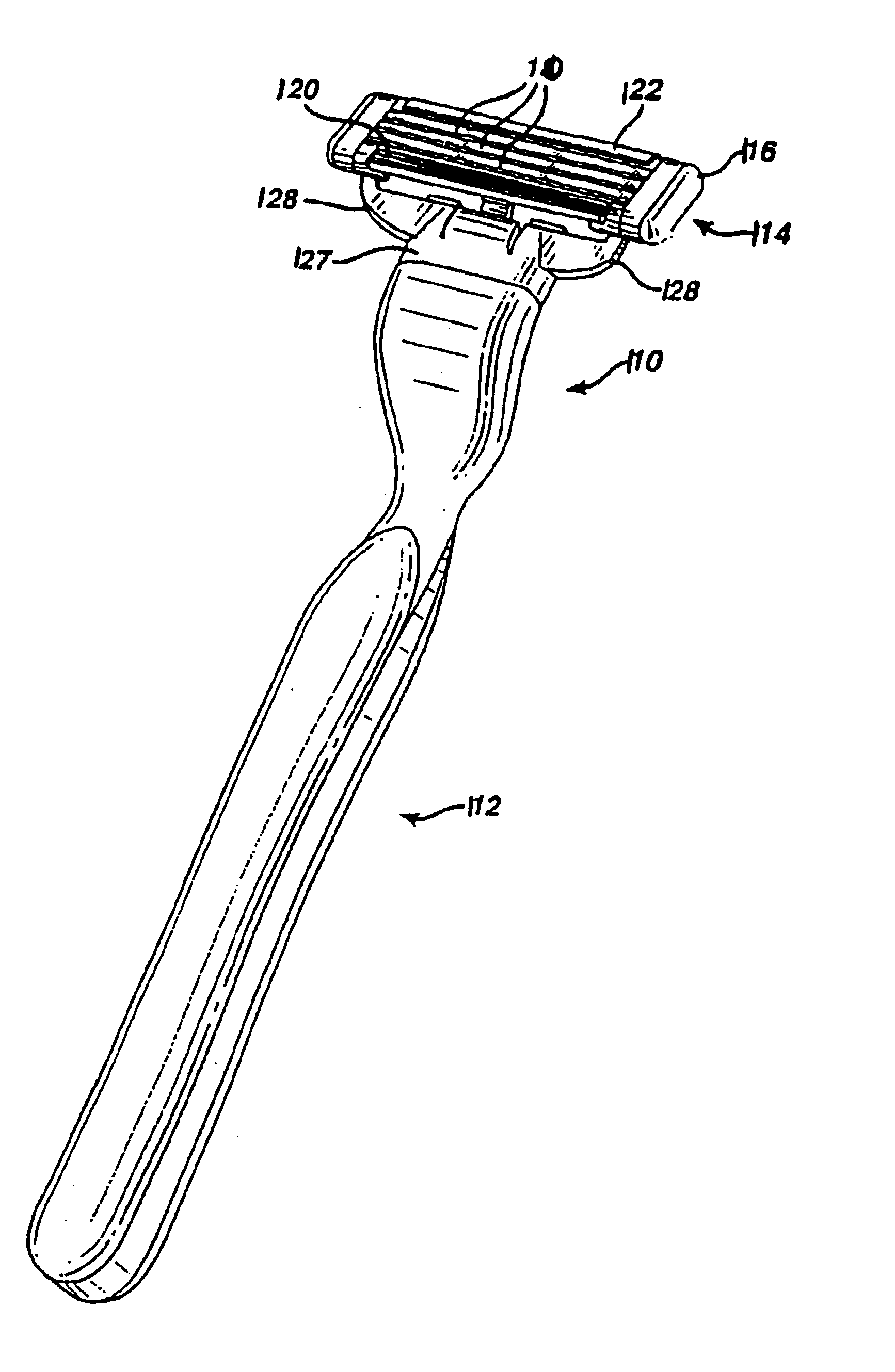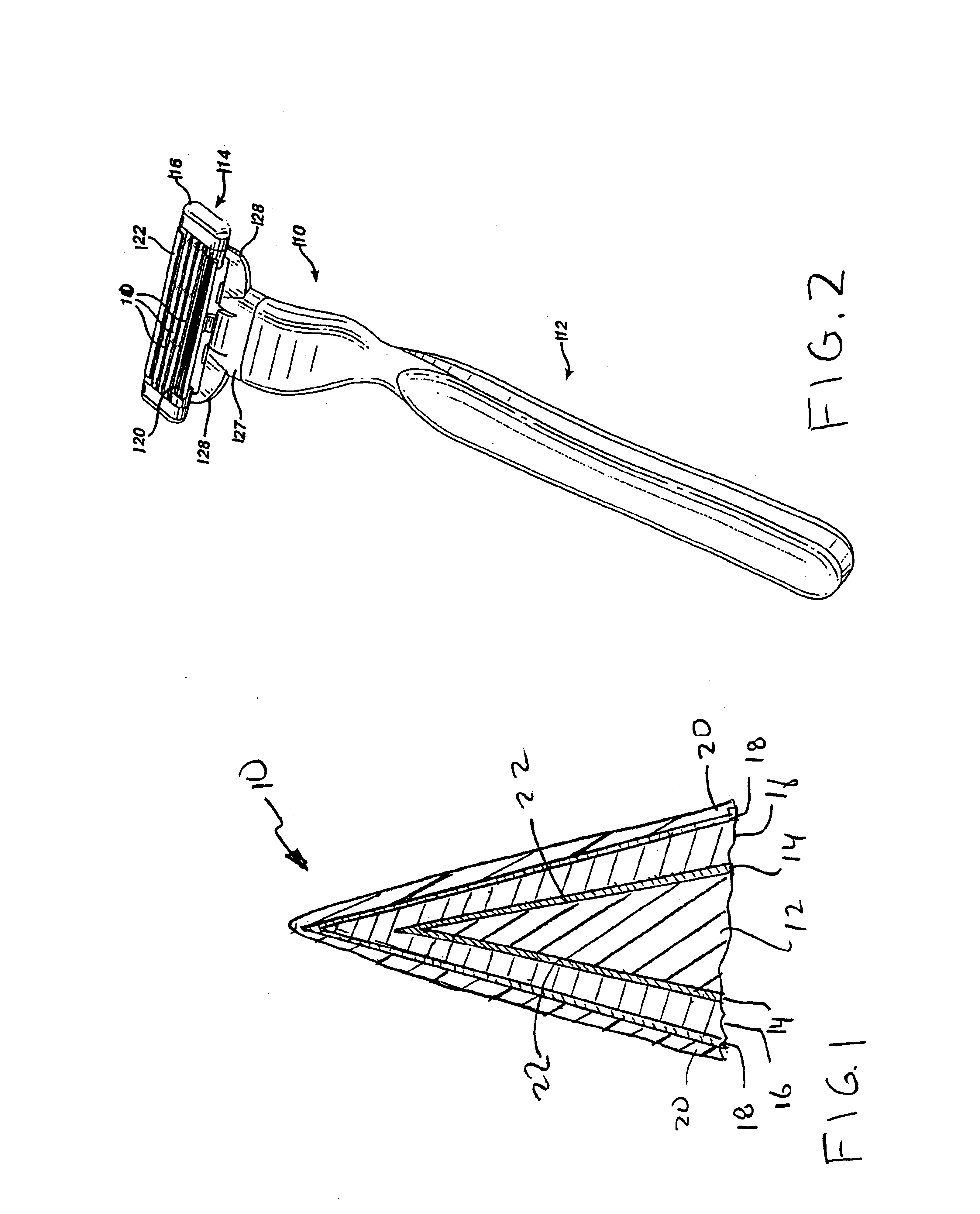Razor blade technology
- Summary
- Abstract
- Description
- Claims
- Application Information
AI Technical Summary
Benefits of technology
Problems solved by technology
Method used
Image
Examples
Embodiment Construction
Referring to FIG. 1, there is shown razor blade 10 including substrate 12, interlayer 14, hard coating layer 16, overcoat layer 18, and outer layer 20. The substrate 12 is typically made of stainless steel (though other substrates can be employed) and has an ultimate edge sharpened to a tip radius of less than 1,000 angstroms, preferably 200 to 300 angstroms, and has a profile with side facets 22 at an included angle of between 15 and 30 degrees, preferably about 19 degrees, measured at 40 microns from the tip.
Interlayer 14 is used to facilitate bonding of the hard coating layer to the substrate. Examples of suitable interlayer material are niobium and chromium containing material. A particular interlayer is made of niobium greater than 100 angstroms and preferably less than 500 angstroms thick. PCT 92 / 03330 describes use of a niobium interlayer.
Hard coating layer 16 provides improved strength, corrosion resistance and shaving ability and can be made from carbon containing materials...
PUM
 Login to View More
Login to View More Abstract
Description
Claims
Application Information
 Login to View More
Login to View More - R&D
- Intellectual Property
- Life Sciences
- Materials
- Tech Scout
- Unparalleled Data Quality
- Higher Quality Content
- 60% Fewer Hallucinations
Browse by: Latest US Patents, China's latest patents, Technical Efficacy Thesaurus, Application Domain, Technology Topic, Popular Technical Reports.
© 2025 PatSnap. All rights reserved.Legal|Privacy policy|Modern Slavery Act Transparency Statement|Sitemap|About US| Contact US: help@patsnap.com


